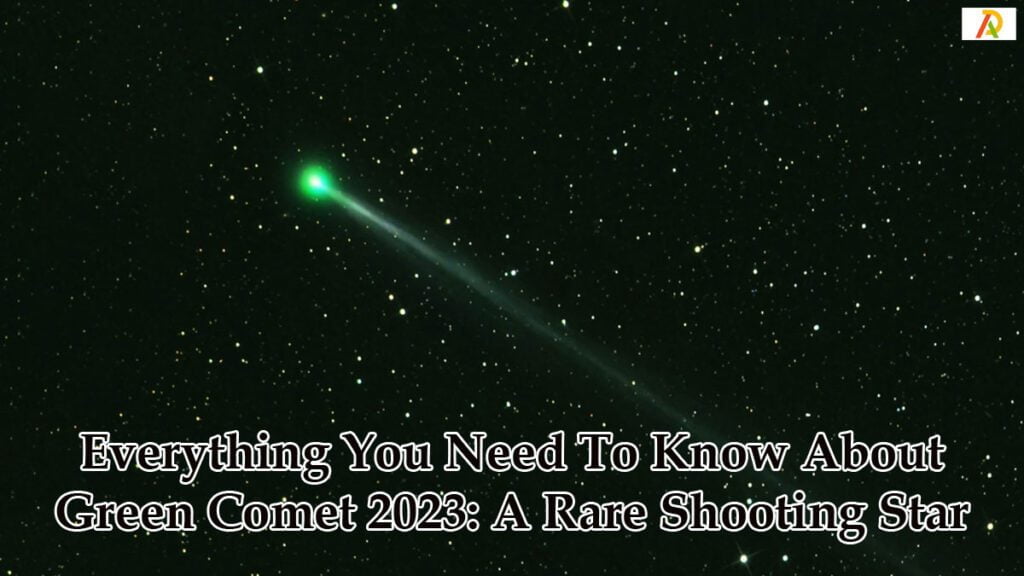Everything You Need To Know About Green Comet 2023: A Rare Shooting Star

Last month, did you notice the Green Comet 2023? It was a little challenging to see the frosty visitor in February with the unaided eye, but that may not be the case with a much brighter “new” comet that scientists have recently discovered.
Except for its orbit, which will bring it closest to Earth in October 2024, little is known about this comet, officially known as C/2023 A3 (Tsuchinshan-ATLAS), which was found simultaneously by observatories in China and Africa.
HOW MUCH BRIGHTNESS WILL THE GREEN COMET 2023 ATTAIN?
The wait might be worthwhile because comet C/2023 A3 might achieve brightness comparable to that of Venus. That is incredibly bright—far brighter than Comet C/2023 E3 in February or Comet NEOWISE in the summer of 2020.
So, Green Comet 2023, where to see? Comets C/2023 A3, which is currently more than seven Earth-Sun distances from Earth and is roughly between Mars and Jupiter, will reach closest to the Sun on September 28, 2024 (really inside Mercury’s orbit, which is why high brightness estimates are made), and will pass closest to Earth on October 12, 2024.
THE COMET’S PEAK BRIGHTNESS WILL OCCUR WHEN?
Comet C/2023 A3 may reach -5 magnitude in mid-October when it becomes visible in the western sky of the northern hemisphere due to a phenomenon called forward-scattering. However, green comet 2023 A3 will only be visible near sunrise and sunset in late September and mid-October 2024 because of the angle at which it enters and leaves the solar system. As a result, it will pass between Earth and the Sun.
Northern hemisphere comet viewers may have to wait until later in October 2024, when the comet emerges from the Sun’s glare and is visible after sunset, appearing to be rather close to Venus.
WHY IT’S CHALLENGING TO ANTICIPATE VISIBLE COMETS?
It’s also true that comets’ future brightness is notoriously challenging to forecast. In any case, comet C/2023 A3 is far away and challenging to view. It must first survive approaching the Sun to be light, but it also needs to have a big nucleus and a dusty tail, which is now hard to determine.
Considering those restrictions, the Green Comet 2023 might be a breathtaking sight. So, just in case, why not plan to be in or close to an International Dark Sky Place in mid-to-late October 2024 to take advantage of the best views after sunset?
WHAT IS THE ORIGIN OF THE COMET?
Long-period comets like C/2023 A3 and C/2023 E3 linger in the Oort Cloud, a region of space around our solar system roughly 100,000 times farther than the distance between the Earth and the Sun.
Green Comet 2023 is named after the fact that it was discovered simultaneously by the Tsuchinshan Observatory in China and the Atlas Telescope in South Africa on February 22, 2023.


